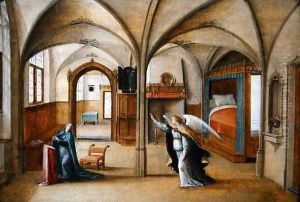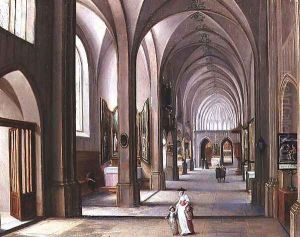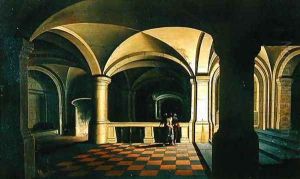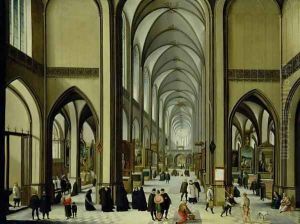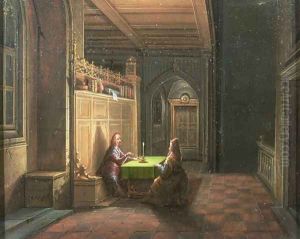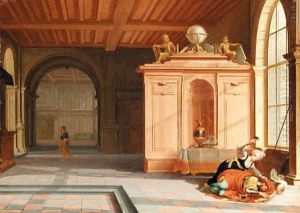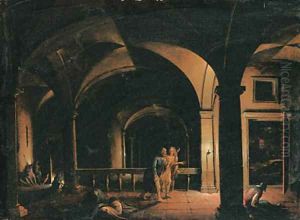Hendrik van Steenwyck Paintings
Hendrik van Steenwyck the Elder was a notable figure in the world of art, born around 1550 in the city of Kampen or possibly Mechelen, located in the Low Countries. He is recognized as a pioneer in the genre of architectural painting, which became a significant theme in Netherlandish art. His work is especially important for its contribution to the development of perspective, a technique that was still being explored and refined during his lifetime. Steenwyck's paintings often featured intricate interior scenes of churches and cathedrals, demonstrating not only his skill in rendering architectural details but also his innovative use of light and shadow to create depth and volume.
Steenwyck moved to Antwerp, a bustling hub for artists in the 16th century, where he became a master in the Guild of St. Luke in 1577. It was here that he was deeply influenced by the works of Hans Vredeman de Vries, a renowned architect and perspective theorist of the time. This influence is evident in Steenwyck's meticulous attention to geometrical principles and the spatial arrangement of interiors. His paintings, characterized by their precise perspective and detailed portrayal of architectural elements, gained him recognition and patronage across Europe.
Later in his career, Steenwyck moved to London, where he continued to work and influence the artistic scene. His legacy was carried on by his son, Hendrik van Steenwyck the Younger, who also became a prominent painter of architectural scenes. Steenwyck the Elder's death in 1603 marked the end of an era, but his contributions to the art of perspective and architectural painting left a lasting impact on the generations of artists that followed. Through his innovative approach and mastery of technique, Steenwyck played a crucial role in the evolution of Dutch and Flemish art, making him a significant figure in the history of European painting.
